Polyporus
[Medicinal Use] The sclerotia of Polyporusumbellatus (Pers.) Fries.
[Nature, flavor and meridians] Sweet, light, flat. Returns to the kidney and bladder meridians.
[Efficacy] Diuretic and dampness
[Clinical Application] 1. Used for symptoms such as difficulty urinating, edema, diarrhea, stranguria, and leucorrhea.
Polyporus cocos is sweet, light and exudative, and has a significant diuretic effect. It is mainly used for conditions such as difficulty in urination and edema. It is often used together with Poria cocos, Alisma and other products (such as Wuling powder); for patients with yin deficiency, it can be used with donkey-hide gelatin and talc ( Such as Zhuling soup). Because it can be a diuretic, it has the effect of diluting water and dampness. It can be used together with other diuretic and dampness-removing medicines or heat-clearing and dampness-removing medicines for wetness injection, gonorrhea due to dampness and turbidity, and diarrhea due to dampness and heat.
[Prescription name] Polyporus polyporus, powdered Polyporus polyporus (wash, dry and slice)
[General dosage and usage] One to three qian, decoct and take
[Note] Polyporia cocos is better than Poria cocos in diluting water and absorbing dampness, but it has no effects on strengthening the spleen or calming the heart, which is why it is different from Poria cocos.
[Examples of prescriptions] Siling Powder (“Ming Yi Zhi Zhang”): Poria, Alisma, Polyporus, and Atractylodes are used to treat loose stools, edema, and difficulty in urination.
Zhuling Decoction (“Treatise on Febrile Diseases”): Polyporus, Poria, Alisma, Talc, and Donkey-hide Jiao treat Yangming disease, with floating pulse, fever, thirst for water, and difficulty in urination.
[Excerpt from literature] “Shen Nong’s Materia Medica”: “Benefiting water channels.”
“Pearl Sac”: “It can relieve diarrhea, quench thirst, and cure lymphadenitis.”
“How to Use Medicine”: “Bitter is used to relieve stagnation, sweet is used to support yang, and sigh is used to facilitate the orifices, so it can remove dampness and facilitate urination.”
“Pharmaceutical Meanings”: “Polyporus cocos has a light taste, and its lightness is beneficial to penetration. It enters the spleen to open water channels. It is used to treat watery diarrhea and damp diarrhea, relieve stranguria and dehumidification, eliminate edema, and remove jaundice. It is the most effective.”
“Compendium of Materia Medica”: “It acts as water to benefit the orifices. It is the same as Poria cocos but does not replenish it. It consumes body fluids and may damage the kidneys and eyesight if taken too much.”
This product is the dried sclerotia of the Polyporus umbellatus (Pers.) Fries fungus. Excavate in spring and autumn, remove sediment and dry.
【Character】
This product is in the shape of strips, round or flat blocks, some with branches, 5~25cm long and 2~6cm in diameter. The surface is black, gray-black or brown-black, with wrinkles or tumor-like protrusions. The body is light and hard, the cross-section is off-white or yellow-white, and slightly granular. The smell is slight and the taste is light.
【Identificação】
(1) Cross section of this product: The entire body is made up of closely intertwined hyphae. The outer layer is 27~54um thick, and the hyphae are brown and difficult to separate; the inner hyphae are colorless, curved, 2~10um in diameter, and some have visible transverse septa, branching or nodular enlargement. There are many calcium oxalate square crystals between the hyphae, most of which are cuboidal, regular biconical octahedron or irregular polyhedron, with a diameter of 3~60um and a length of 68um. Sometimes several crystals are gathered together.
(2) Take 1g of this product powder, add 20ml of methanol, ultrasonicate for 30 minutes, filter, and take the filtrate as the test solution. Take the ergosterol reference substance and add methanol to make a solution containing 1mg per 1ml as the reference substance solution. Test according to the thin layer chromatography method (General Chapter 0502). Take 20 μl of the test solution and 4 μl of the reference solution, and place them on the same silica gel G thin layer plate respectively. Use petroleum ether (60~90°C)-acetic acid Z ester (3: 1) To develop vigorously, unfold, take out, dry, spray with 2% vanillin acid solution, and heat at 105 until the spots become clear. In the chromatogram of the test product, spots of the same color are found at the positions corresponding to the chromatogram of the reference substance.
【examine】
Moisture content must not exceed 14.0% (General Rule 0832 Second Method).
O teor total de cinzas não deve exceder 12,0% (Regra Geral 2302)
Acid-insoluble ash shall not exceed 5.0% (General Chapter 2302).
【Determinação de conteúdo】
Determine according to high performance liquid chromatography (General Chapter 0512).
The chromatographic conditions and system suitability test used octadecylsilane bonded silica gel as the filler; methanol as the mobile phase; the detection wavelength was 283nm. The number of theoretical plates should not be less than 5000 based on the ergosterol peak.
Preparation of reference substance solution: Take an appropriate amount of ergosterol reference substance, weigh it accurately, add methanol to make a solution containing 50ug per 1ml, and you have it.
Preparation of test solution: Take about 0.5q of the powder of this product (passed through No. 4 sieve), weigh it accurately, place it in a stoppered conical flask, add 10m1 of methanol accurately, weigh it, and conduct ultrasonic treatment (power 220W, frequency 50kHz) Leave to cool for 1 hour, weigh again, make up for the lost weight with methanol, shake well, filter, and take the remaining filtrate to get it. For the determination method, accurately draw 20u each of the reference solution and the test solution, inject them into the liquid chromatograph, and measure. Calculated as dry product, this product contains not less than 0.070% ergosterol (C28H440).
Pieces
[Processed]
Remove impurities, soak, wash, moisten, cut into thick slices, and dry.
【Character】
This product is in the form of round or irregular thick slices. The outer skin is black or brown-black and wrinkled. The cut surface is off-white or yellow-white, slightly granular. The smell is slight and the taste is light.
【examine】
Moisture content is the same as that of medicinal materials, and should not exceed 13.0%.
The total ash content is the same as that of medicinal materials, and shall not exceed 10.0%.
【Determinação de conteúdo】
Similar to medicinal materials, the content of ergosterol (C28H440) shall not be less than 0.050%.
【Identificação】
(Except for cut surfaces)
【examine】
Acid-insoluble ash) is the same as medicinal materials.
【Nature, flavor and meridian tropism】
Sweet, light, flat. Returns to the kidney and bladder meridians,
[Functions and Indications]
Diuresis and dampness. Used for difficulty urinating, edema, diarrhea, stranguria, and vaginal discharge.
【Uso e dosagem】
6~12g.
【Armazenar】
Store in a ventilated and dry place.
Polyporus cocos, a traditional Chinese medicine name. It is the dried sclerotia of the Polyporus umbellatus (Pers) Fr. fungus of the Polyporaceae family. It has the effect of diuresis, swelling and dampness. Mainly used to treat edema, dysuria, athlete’s foot, diarrhea, stranguria, vaginal discharge, etc.
Polyporus
Alias: Boar, tangerine pig excrement, ragweed, 豨豨, Diwu peach, wild boar food, pig excrement ling, pig tuckahoe
Meridian tropism of nature and flavor
Sweet, light, neutral; returns to the spleen, kidney, and bladder meridians
Eficácia
Diuresis, swelling, and dampness.
Indicações
Mainly used for edema, difficulty urinating, athlete’s foot, diarrhea, stranguria, vaginal discharge, etc.
Usage and dosage
Oral administration: decoction, 10-15g; or take into pills or powder.
adverse reactions
When Polyporus Injection is injected intramuscularly, dry mouth, dizziness, and temporary worsening of skin itching may occur in a few cases, but the drug does not need to be discontinued. If the injection time is longer, there may be local malabsorption.
Tabu
Dietary taboos: Avoid eating lard and eat less greasy food.
Things to note
It has a strong diuretic effect, so it should not be used if there is no water in the body or if there is excessive urination.
chemical composition
Mainly contains polysaccharides, such as Polyporus glucan, steroids, free and bound biotin, crude protein, etc.
Efeitos farmacológicos
1. Effect on the urinary system: Poria cocos decoction has stronger diuretic power than caffeine, Akebia or Poria cocos. Wuling Powder (Polyporus, Poria, Atractylodes, Alisma, Guizhi) can not only increase urine output, but also increase the excretion of sodium and potassium. Its diuretic mechanism may be to inhibit the reabsorption of electrolytes and water by the renal tubules.
2. Effect on immune function: Polyporus polyporus is a non-specific immune stimulant. Its tumor suppressive effect may also be related to this.
3. Hepatoprotective effect: Polyporus polysaccharide can reduce the damage of carbon tetrachloride to mouse liver, reduce the pathological damage of liver tissue and decrease the activity of serum alanine aminotransferase.
4. In addition, Polyporus polyporus has anti-radiation, antibacterial, anti-aging, enhanced platelet aggregation, and anti-mutagenic effects.
Toxicological effects
The therapeutic dose of polyporus polysaccharide was administered once or 100 times by continuous gavage or intraperitoneal injection for 28 days. No toxic reactions were observed in mice and dogs, and no substantial damage was seen in various organs. Carcinogenicity, teratogenicity, allergy and skin irritation tests showed no obvious toxicity and irritation effects of polyporus polysaccharide.
Related discussions
1. “Compendium”: Poria cocos has a light exudation, and the Qi can rise and fall, so it can relieve abdominal pain and facilitate urination. It has the same effect as Poria cocos, but it is not as good as Poria cocos when used as a tonic.
2. “Compendium of Materia Medica”: Polyporus cocos is a medicine that exudes moisture, dilutes water channels, and decomposes yin and yang. This medicine tastes sweet and slightly bitter. Although the bitterness is reduced, the sweetness and lightness can penetrate and disperse. When it rises, it can descend, and when it descends, it can rise. Therefore, it is good at opening up the internal organs and distributing the qi between the outer yang and the inner yin to facilitate urination. Therefore, in ancient times, it was used to treat malaria and relieve poisonous poisons. Zhen’s prescription treats typhoid, febrile disease, and severe fever. It can induce sweating and expel evil spirits. This method helps the yang energy to escape from the outside. Zhang’s prescription treats fullness, swelling, acute pain in the abdomen, annoyance in the heart, malaria, dysentery, and diarrhea. This is because the qi of Li Yin is released inside. Zhang Zhongjing treats those with Taiyang disease, who have floating pulse, fever, quenched thirst and difficulty in urination, use Wuling Powder to induce sweating; those who are thirsty and want to drink water but then vomit again are called Shui Ni, use Wuling Powder to stop vomiting; Cold cough in winter, combined with cold and heat like malaria, is called phlegm wind. Use Wuling Powder to treat the cough. These three methods all focus on the magical function of Polyporus cocos to open up the internal organs and differentiate yin and yang.
3. “Pharmaceutical Meaning”: Polyporus cocos has a light taste, and is mainly used for osmosis. It enters the spleen to open water channels and is used to treat watery and damp diarrhea, relieve stranguria and dehumidification, eliminate edema, and treat jaundice. It is the most effective. Therefore, Yun and Amber Same merit. But it cannot be used as the main agent. The tonic medicine is to strengthen the spleen, the diarrhea medicine is to regulate the spleen, the warming medicine is used to warm the spleen, and the cooling medicine is used to clear the spleen.
4. “Changsha Medical Explanation”: “Porus cocos exudes water, and is more effective than Poria cocos. However, the nature of water requires a well-organized civil system, and it cannot walk alone. Polyporus cocos powder can diuresis, and Atractylodes can dry out damp soil. ; Zhuling decoction can benefit water by using donkey-hide gelatin to clear wind and wood; Wuling can benefit water by using atractylodes to dry soil, and cinnamon twig can benefit water; eight flavors can benefit water by using cinnamon twig to reach wood, and rehmannia glutinosa can clear wind; People who seek benefits from pigs, Fu, Hua, and Ze may not be able to achieve great results.
5. “Materia Medica Seeking Truth”: Polyporus cocos is used in all prescriptions such as Si Ling, Wu Ling, etc. Although its properties are similar to Alisma, it also enters the bladder and kidney meridian, relieves heat and removes dampness, and promotes orifices and diuresis, but the water is eliminated. The spleen will be dry, and when the water is exhausted, the qi will go away; although Alisma is the same as diuresis, the nature is also similar to dryness, but it is mostly salty, and there is still moisturizing. Although the luster cures fire, the nature also damages qi, but moistening can nourish yin, and there is still moisturizing. Make up for it. Therefore, pig (ling) must be combined with Alisma and used together, then the moisturizing and dryness will be appropriate and there will be no bias. As for Poria, although it is a diuretic, it can be used to remove dampness. However, Poria (Ling) enters the Qi and goes up, and then enters the blood and goes down. It is also used with Alisma to diuresis and swelling, and to treat malaria and dysentery. It is considered to be a summer heat drug. The evil dampness and heat are internally closed, and they all take this as the need for propaganda. The ancients have said that clearing and promoting urination is nothing like this. Therefore, the yin-nourishing medicine can stop Alisma without using Polyporus cocos, which is why it is called this ear. However, this medicine is specially designed to draw water, and body fluids are easily consumed. Taking it for a long time may cause damage to the eyes.
clinical application
1. Treat pregnancy swelling from the legs to the abdomen, difficulty in urination, and slight thirst to induce drinking: Polyporus 5 liang, powdered. Take Fang Cun Dagger with cooked water three times a day. (“Secret Record of Son and Mother”)
2. To treat urinary obstruction during pregnancy and hard pain under the navel: one or two pieces each of Polyporus polyporus, Akebia bark, and Morus root white bark (file). Pound and sieve coarsely. Take three qian daggers with a cup of water each time, add it to the wick of a lamp and fry until it is seven minutes thick, then take it warm before eating. (“Pu Ji Fang” Pig Ling Soup)
3. Treat liver cirrhosis and ascites: one carp (500-2000g in weight), 9g each of Polyporus polyporus, Dabupipi, Fangji and Alisma. Cut open the belly of the fish, remove the internal organs and wash it. Grind the above four herbs into powder and put them into the belly of the fish, cook them, remove the residue, and eat the fish to drink the soup. (“Chinese Medicinal Fungi”)
4. To treat less red urine and loose stools: divide Polyporus polyporus, Poria cocos, Alisma and Atractylodes in equal parts. For fine powder, take 2 qian each time on an empty stomach. (Zhuling Soup from “The General Record of Shengji”)
5. To treat cold and dampness in the intestines and stomach, excessive diarrhea, and inability to eat: half a tael of Polyporus polygonatum (black skin removed), two nutmegs (shelled, canned), and one point of Phellodendron cork (coarse skin removed, roasted). Pound the three flavors into powder, make rice drink and make pills as big as mung beans. Take ten pills each time, drink with hot water before eating. (“Zongji Zonglu” Zhuling Pills)
6. To treat strong vitality and white and turbid dreams in the new year: one ounce of Pinellia ternata and one ounce of Polyporus cocos. The first part of the tuber is as big as a bean, and the bottom part is the polyporus. First stir-fry the tuber to make it yellow without burning it, and then remove the fire poison from the ground for half a day. Take Pinellia ternata as the powder, mix half of the Polyporus cocos powder and mix thoroughly into pills, as big as tung seeds, mix the remaining Polyporus cocos powder into pills, make them dry, and put them in a bottle without oil sand. Take 40 pills each time, drink it with warm wine and salt soup, and drink it with cold wine in Shen Weijian. (“Jisheng Prescription” Zhuling Pills)
7. To treat floating pulse, fever, thirst for water and difficulty in urination: one or two each of Poria cocos (peeled), Poria cocos, Alisma, donkey-hide gelatin, and talc (crushed). Add four liters of water to the five flavors. Boil the four flavors first, take two liters, remove the water, add donkey-hide gelatin and dissolve it. Take it warmly and take it seven times a day, three times a day. (“Treatise on Febrile Diseases” Zhuling Decoction)
8. To treat vomiting caused by illness on the diaphragm and water cravings: Polyporus, Poria, and Atractylodes are divided into equal portions. Take the three flavors, mix it into powder, drink it and take it three times a day. (“Synopsis of the Golden Chamber” Zhuling Powder)
Related compatibility
1. Polyporus cocos combined with Atractylodes: Polyporus is good at expelling dampness and diluting water; Atractylodes is good at replenishing qi and strengthening the spleen. The combination of the two medicines has the effects of strengthening the spleen and replenishing qi, expelling dampness and diluting water. It is suitable for watery diarrhea, oliguria, tiredness and lack of appetite due to excessive dampness and moderate obstruction, and disorders of distinguishing and distinguishing turbidity.
2. Polyporus cocos with big belly skin: Polyporus cocos is good at exuding dampness and diluting water; big belly skin is good at lowering qi and promoting water. The combination of the two medicines has the effect of diluting water and removing swelling. It is suitable for those who are swollen and have difficulty urinating.
Differential medication
Poria cocos and Polyporus cocos: both drugs are diuretic and anti-edema drugs. They are sweet in taste and mild in nature. They are both commonly used to treat swelling and fullness. Both drugs can diuretic and dampness, which is not good for urination, stranguria, edema, etc., and often causes beards. For use. However, Polyporus cocos mainly enters the kidney and bladder meridians, and has only the effect of exuding dampness and diuresis, but has no effect of tonifying the spleen and benefiting the heart. Its diuretic effect is stronger than that of Poria cocos, and it is suitable for edema, diarrhea, stranguria, etc. Poria cocos mainly enters the heart, spleen, and kidneys, and is beneficial to the middle and tonic. It can replenish the heart and spleen, calm the heart and calm the mind. It is used for diarrhea, loose stools, less food, etc. caused by spleen deficiency and excess dampness, as well as insomnia, forgetfulness, etc.; and Poria cocos is also used for It is an essential medicine for treating phlegm. It is also often used to treat dizziness, cough, palpitations, etc. caused by phlegm retention. The two are often used together in the treatment of edema and other diseases.
Related drugs
Shenyanling Capsules.
Related prescriptions
Wuling San “Treatise on Febrile Diseases” and Zhuling Decoction “Treatise on Febrile Diseases”.
Medicinal Diet Therapy
Pork lining, melon skin and crucian carp soup:
1. Efficacy: Strengthen the spleen, remove dampness, reduce swelling and diuresis. It is used for liver cirrhosis, ascites, and dystrophic edema due to spleen deficiency and water-dampness. Symptoms include weight loss, fatigue, difficulty urinating, mild ascites, or edema and jaundice of the lower limbs.
2. Raw materials: 1 crucian carp, 6g Polyporus polyporus, 10g winter melon peel, 2 slices of ginger, appropriate amount of seasoning.
3. Method: Remove the scales, gills and internal organs of crucian carp and wash them. Wash the polyporus, winter melon peel and ginger. Put the crucian carp and crucian carp into a clay pot and add an appropriate amount of water. After boiling over high heat, simmer over slow fire for 2 hours, season and eat.
4. Usage: Consume in moderation with each meal.
Harvesting and processing
Check in autumn and winter 4-5 years after the Polyporus cocos is planted. If there are very few white heads that sprout, or new Polyporus no longer germinates, and rot occurs, it should be dug and replanted in time between March and May of the following year. Generally, 4-5 years after planting. annual harvest. After harvesting, select the sclerotia that are grey-brown and soft and keep them as ling seeds. Take the black and hard Polyporus cocos and dry it in time to become the finished Polyporus cocos.
Preparation method
Remove impurities, separate large and small ones, and soak to remove sediment. Wash and moisten thoroughly, cut into thick slices and dry.
Save method
Store in a ventilated and dry place.
Properties of medicinal materials
The sclerotia are irregular blocks, strips, round or flat blocks, some are branched, 5-25cm long and 2-6cm in diameter. The surface is black, gray-black or brown-black, with wrinkles or tumor-like protrusions. The body is light and hard, the cross-section is off-white or yellow-white, and slightly granular. The smell is slight and the taste is light. The ones that are large, have black skin, white cross-section and are heavier are better.
Characteristics of slices
It is an irregular thick slice with an off-white or yellow-white surface and a slightly granular shape. The periphery is wrinkled, black, gray-black or brown-black, light in body, tough in texture, light in odor and light in taste.
Plant species
Polyporus, a fungus of the genus Polyporus in the family Polyporaceae.
Morphological characteristics
The sclerotia are irregular in shape, appearing in lumps of varying sizes, solid, purple-black in surface, with many uneven wrinkles, white inside, and generally 3-5cm×3-20cm in size. The fruiting body emerges from the sclerotia buried underground, has a stalk and branches many times, forming a cluster of caps with a total diameter of up to 20cm. The cap is round, 1-4cm in diameter, umbilical in the middle, with light yellow fibrous scales, nearly white to light brown, without ring marks, thin and sharp edges, often involute, fleshy, hard and brittle after drying. The flesh is thin and white. The tube is about 2mm long, the same color as the flesh, and extends downward. The tube mouth is round to polygonal, with 3-4 per 1mm. The spores are colorless, smooth, cylindrical, round at one end and crooked at the other end, (7-10)μm×(3-4.2)μm.
Distribution area
Distributed in Northeast China and Hebei, Shanxi, Henan, Hubei, Sichuan, Guizhou, Yunnan, Shaanxi, and Gansu.
Authentic production area
Mainly produced in Shaanxi, Shanxi, Hebei, Henan, Yunnan and other places.
Growth environment
Grows on the ground next to tree roots in the forest or next to rotten wood piles.
Growth practice
Grows wild in secondary forests of mountains at an altitude of 1000-2000m. It grows mostly on sunny slopes in the rainy south of my country, and mostly on shady or semi-sunny slopes in the north. The sclerotium begins to germinate when the ground temperature at 5cm is 8-9℃. When the monthly average ground temperature is 14-20℃, the new ling grows fast and germinates more. The fruiting body is formed at 22-25℃. Polyporus umbellatus is suitable for growing in loose, breathable, high-humus, fertile and slightly acidic sandy loam with a soil water content of 30%-50%. Polyporus and Armillaria mellea live in symbiosis, so the companion plants of Polyporus mellea are related to the saprophytic and parasitic trees of Armillaria mellea, and often live together with oak, birch, maple, oak, elm, poplar, willow, maple, Ligustrum lucidum and other tree species.
Cultivation technology
1. Semi-wild cultivation: Select shrub forests and firewood forests where Armillaria mellea can grow, and timber forests and economic forests should not be selected. In southern Shanxi, it is advisable to select an altitude of 1000-1500m, flat terrain or trench land and gentle slopes of about 15°, and fertile sandy loam soil. First, the Armillaria mellea branches should be cultivated. The roots and wood segments where Armillaria mellea grow can be dug as fungus species, or artificially cultivated Armillaria mellea tertiary production species can be used to cultivate fungus branches. Select fresh branches of Fagaceae plants and other broad-leaved trees with a diameter of 1-2cm, and cut them obliquely into 10cm small sections. Dig a cultivation pit with a diameter of 50-60cm and a depth of 30cm, spread a layer of leaves at the bottom of the pit, and cover a thin layer of soil between the cut branches. Then repeat this method to place several layers on top. Generally, 5-7 layers can be placed in each pit. Finally, cover the top of the pit with 3-5cm of soil, and cover the soil with leaves. Water frequently to keep moisture. After about two months, the branches are covered with honey fungus hyphae, which are called branches. Then select branches with a diameter of 2-3cm and cut them into short sections of about 30cm long as strains. According to the method of cultivating branches, expand and cultivate the mushroom materials to accompany the planting of Polyporus. Polyporus strains should choose vigorous, gray-brown fresh Polyporus as seed Polyporus. Dig a small hole about 10cm deep next to the bushes. The hole should have tree roots and crisscrossing hair roots. First, spread a layer of wet leaves at the bottom of the hole, put a section of mushroom material next to the tree roots, and put Polyporus sclerotia between the tree roots and the mushroom material. Put 100-250g of seed Polyporus in each hole, then cover a layer of moist leaves and fill it with soil. Cover the top of the hole with a thicker layer of leaves.
2. Field management: After planting, the Polyporus should not be turned over and livestock should be avoided from trampling. In case of drought in summer, water can be used for irrigation. Cover the top of the hole with a layer of leaves every spring to reduce soil moisture evaporation, replenish soil organic matter, and improve soil fertility.
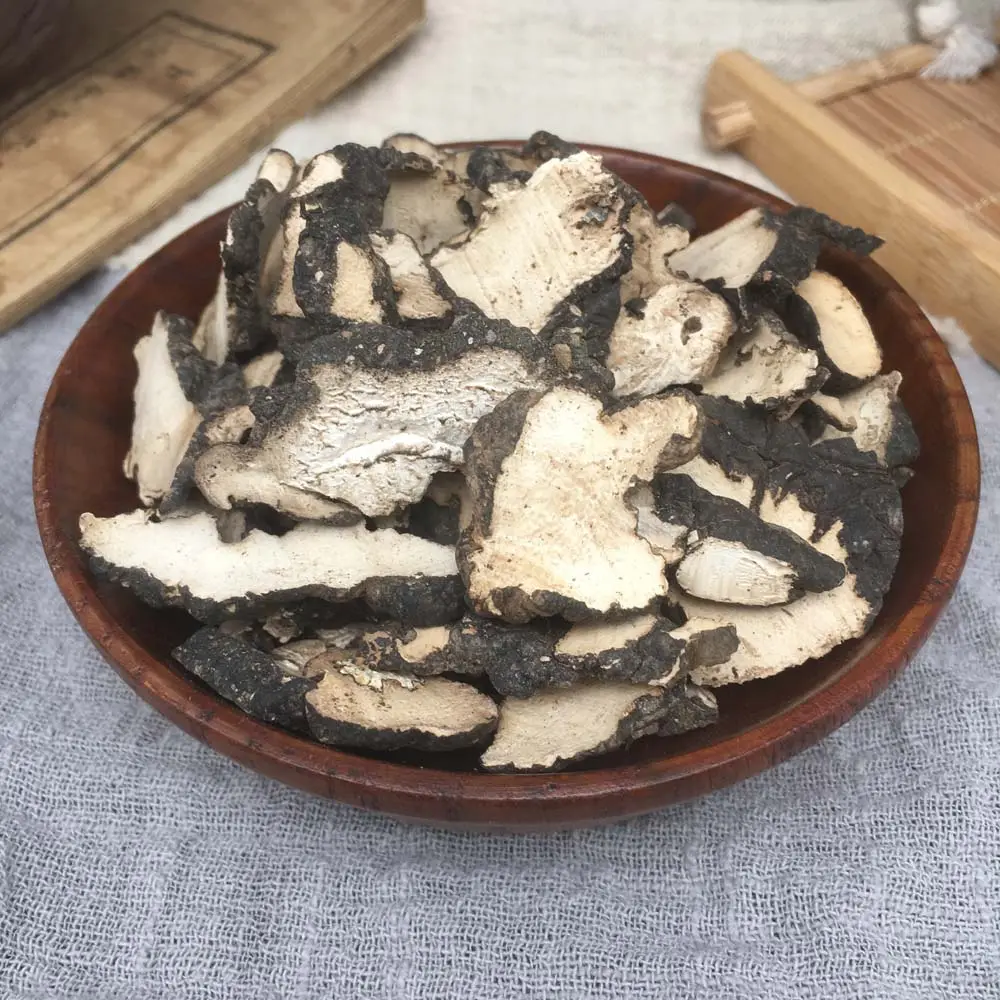
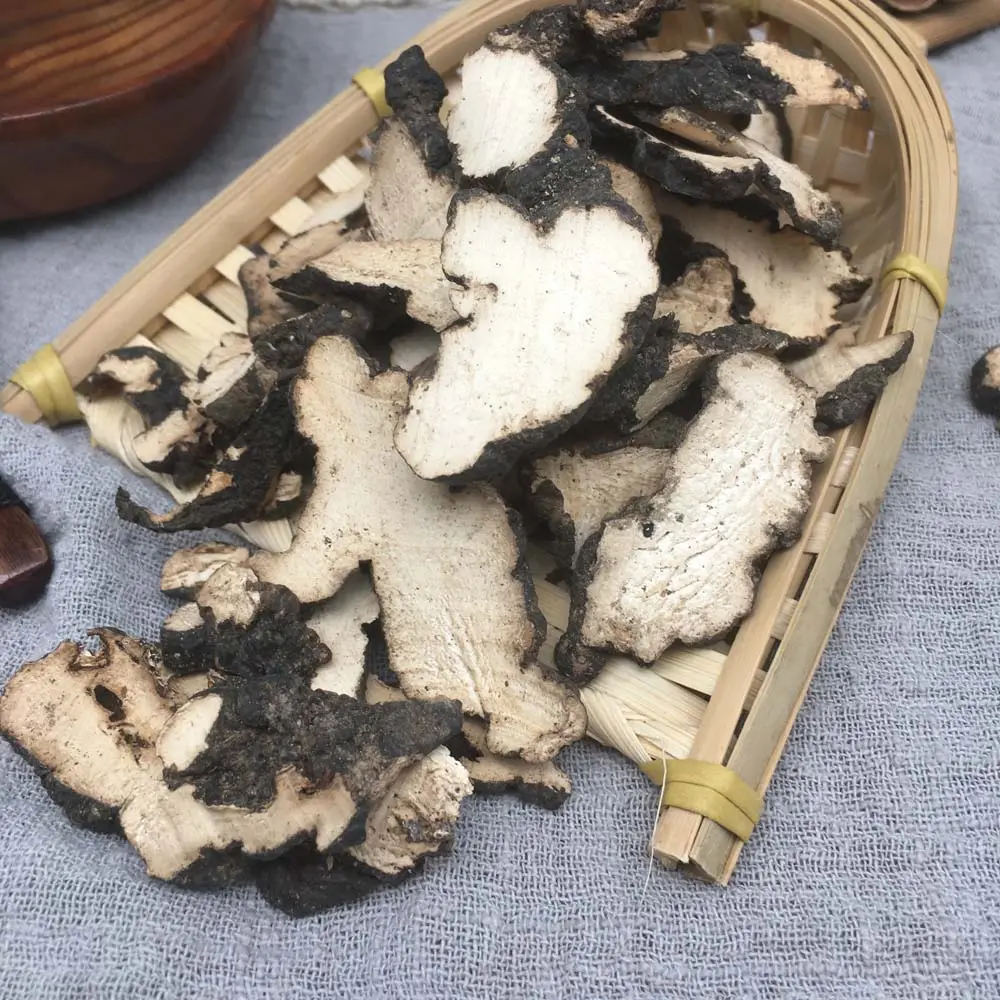


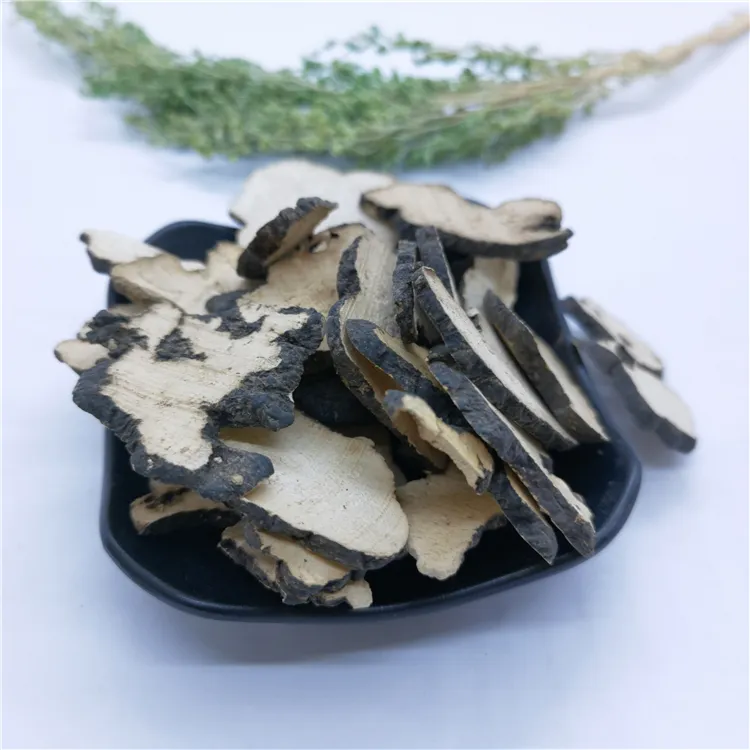
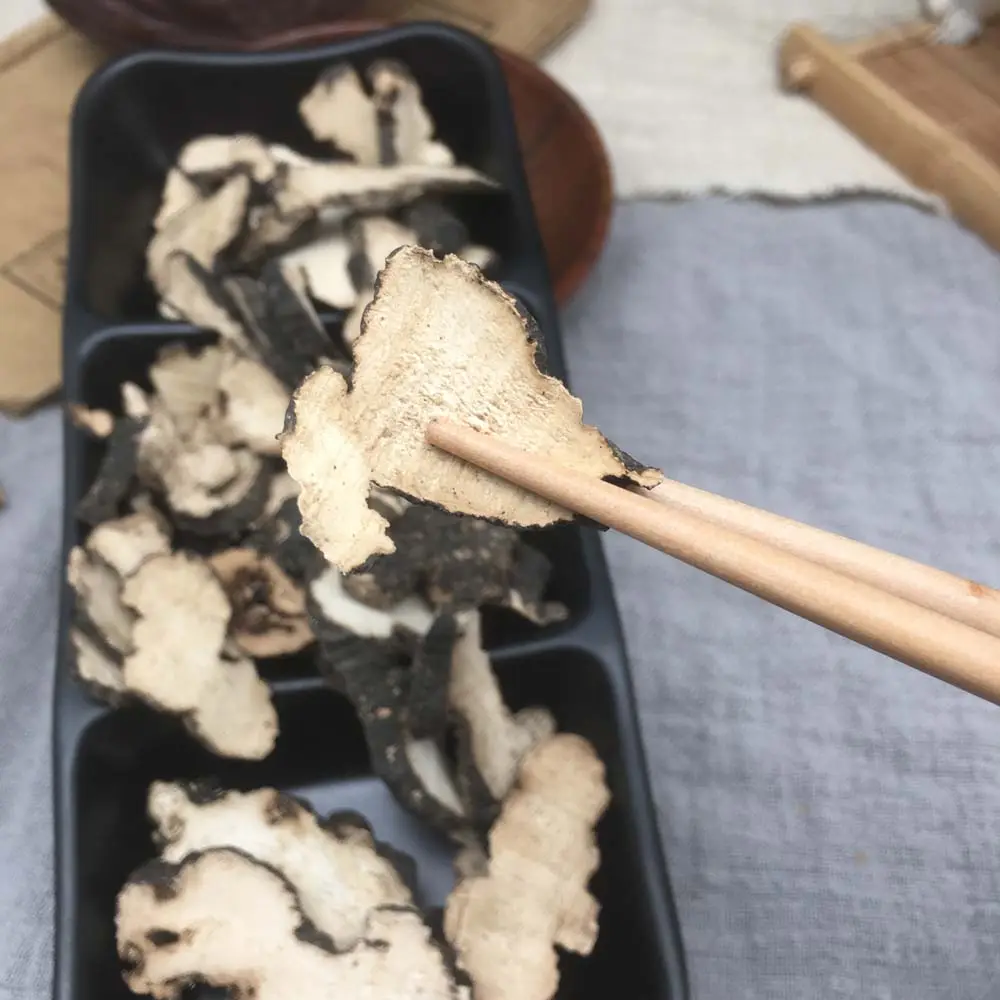


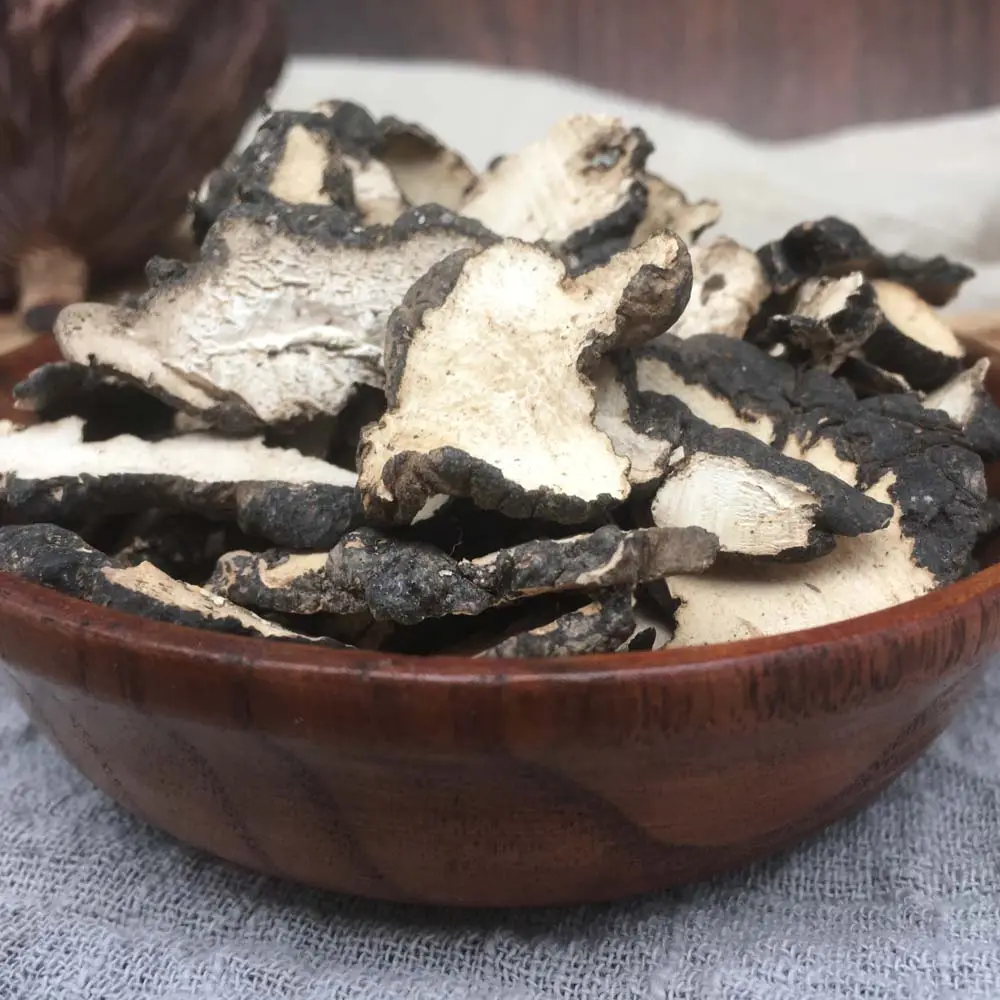
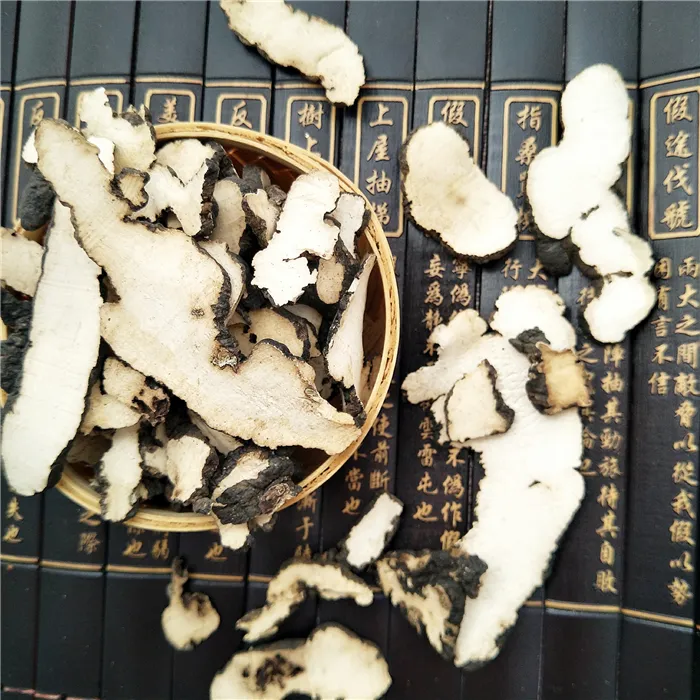
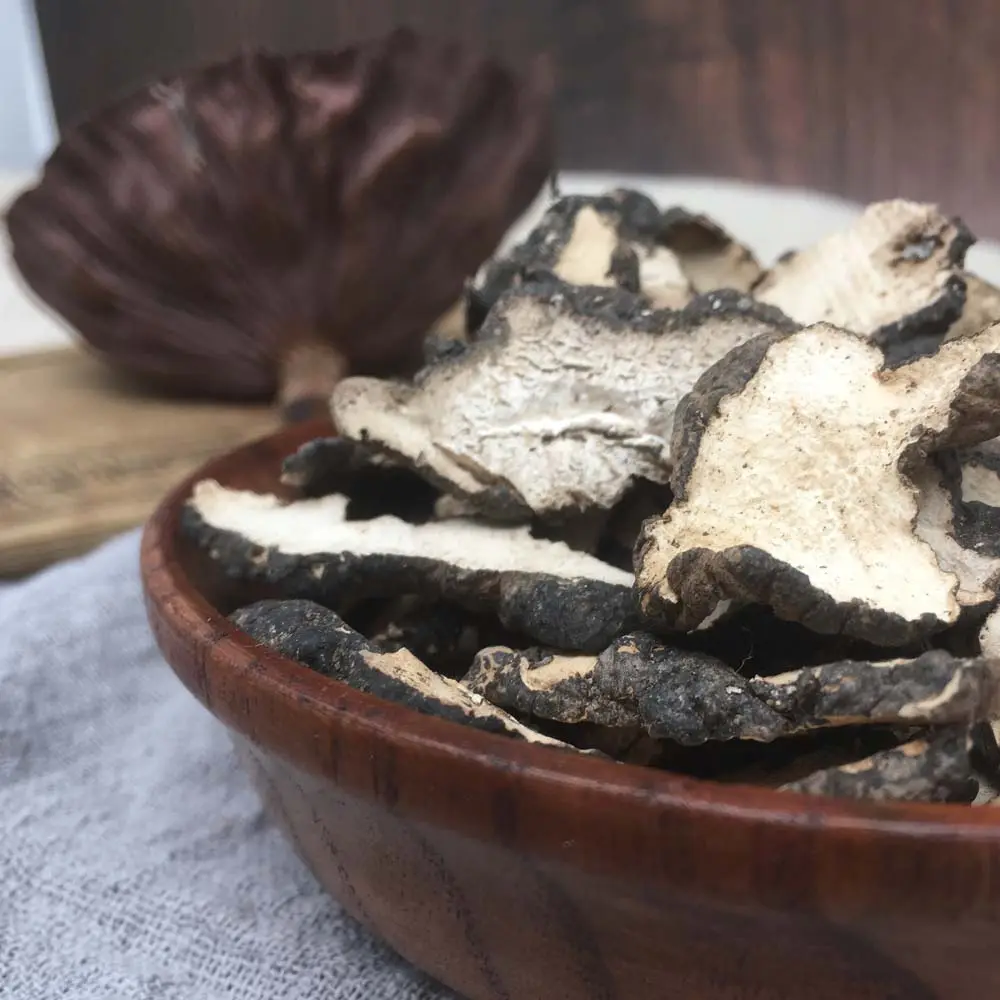
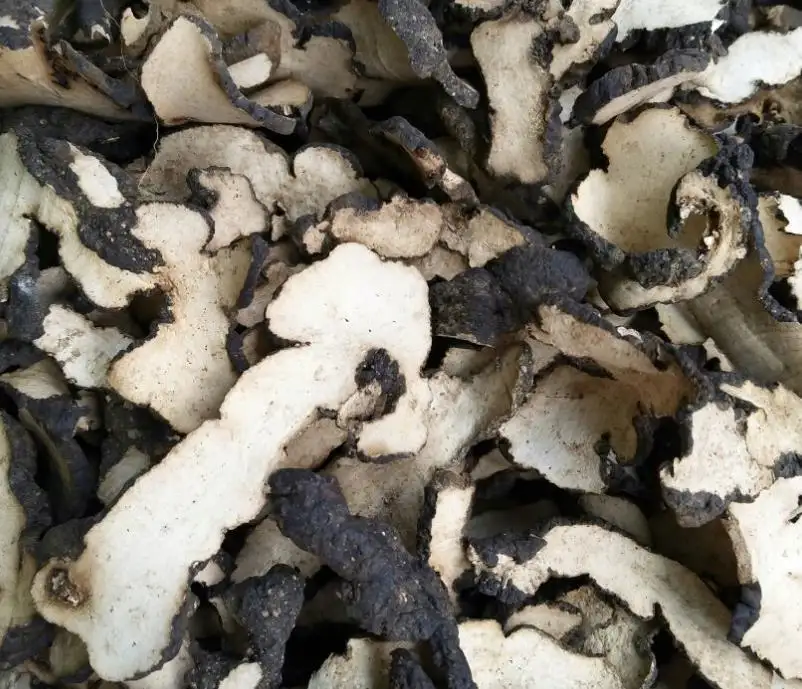


Avaliações
Ainda não existem avaliações.